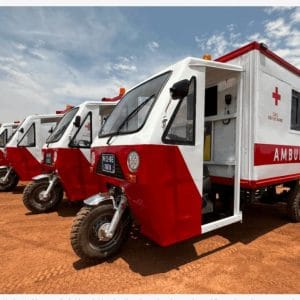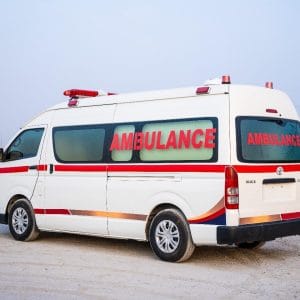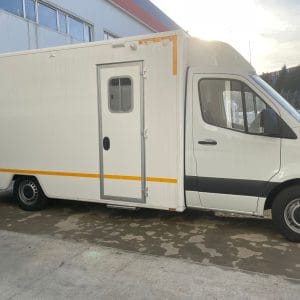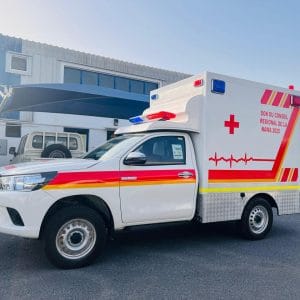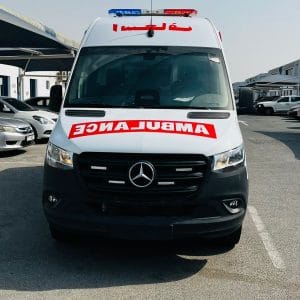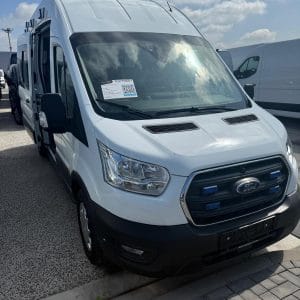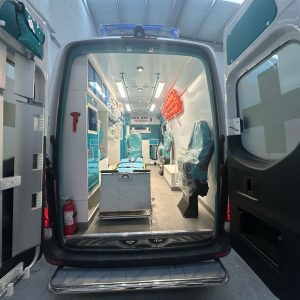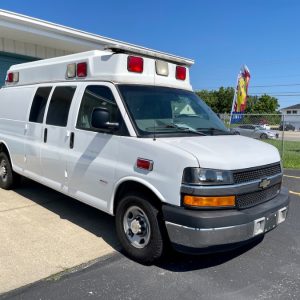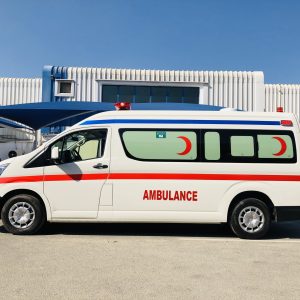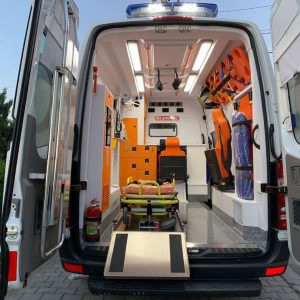Ford Transit Ambulance EN1789 European Standard for Excellence; In the world of emergency medical services (EMS), the vehicle is more than just transport; it’s a mobile clinic, a first-response unit, and a critical link in the chain of survival. Across Europe, one name consistently appears in EMS fleets: the Ford Transit Ambulance. But its popularity isn’t just about reliability; it’s about certified performance. This reputation is built upon its compliance with the EN1789:2020 standard—the definitive European benchmark for ambulance safety and quality.
This article explores why the Ford Transit platform is so successful and how it is engineered to meet the demanding requirements of the EN1789 standard.
What is the EN1789:2020 Standard?
EN1789 is a comprehensive European norm titled “Medical vehicles and their equipment – Road ambulances.” It sets out the minimum requirements for the design, testing, performance, and equipment of ambulances. Its goals are clear:
- Enhance crew and patient safety through stringent crash testing and stability requirements.
- Improve ergonomics to allow medical personnel to work efficiently and effectively in a high-stress environment.
- Ensure reliability of critical systems like electrical power, lighting, and climate control.
- Standardize equipment levels for different types of ambulances (Type C1, C2, C3).
For any emergency service procuring new vehicles, specifying EN1789 compliance is non-negotiable.
Why the Ford Transit Chassis is the Ideal Foundation
Ford does not build the complete ambulance. Instead, they supply a chassis cab—the engine, chassis, and driver’s cabin—which is then sent to a specialized ambulance bodybuilder for conversion. The Ford Transit is a favourite for these conversions due to several key advantages:
- Unmatched Reliability & Service Network: The Transit is renowned for its durability. A vast network of dealers and parts availability across Europe ensures minimal downtime, a critical factor for life-saving services.
- Front-Wheel Drive (FWD) Option: Many Transit models offer FWD, which provides a lower, flatter floor. This makes patient loading easier and creates more usable space inside the medical compartment.
- Driver Familiarity & Comfort: Many potential drivers are already familiar with the Transit van, reducing training time. The cab is designed for comfort during long shifts, reducing driver fatigue.
- Configurability: Available in multiple wheelbases and roof heights, the Transit platform can be tailored to create everything from a compact rapid response unit to a full-size Type C2 emergency ambulance.
Key EN1789 Requirements and How the Ford Transit Ambulance Meets Them
When a bodybuilder converts a Transit, they must adhere to hundreds of clauses within EN1789. Here’s how the final vehicle meets some of the most critical requirements:
1. Crash Safety & Dynamic Crew Seat Testing
- Requirement: The medical attendant’s seat must withstand a dynamic 10g deceleration test, simulating a severe crash.
- Implementation: A specially engineered, crash-tested seat (e.g., from SCHROTH) is installed. It is anchored to a reinforced subframe that is integrated directly with the Transit’s chassis, ensuring the crew remains safe and secure.
2. Vehicle Stability & Rollover Protection
- Requirement: The completed ambulance must pass a strict tilt table test to prove its stability and prevent rollover.
- Implementation: Despite its high roof, bodybuilders ensure stability by using a lowered suspension, positioning heavy equipment (like oxygen cylinders) low down, and carefully calculating weight distribution.
3. Medical Compartment Ergonomics & Dimensions
- Requirement: Specific minimum dimensions for internal height, width, and length to ensure adequate working space.
- Implementation: The Ford Transit’s high-roof and long-wheelbase models provide the perfect canvas. Bodybuilders design the interior layout with defined zones for the patient, attendant, and equipment, optimizing workflow for paramedics.
4. Robust & Redundant Electrical Systems
- Requirement: A redundant power supply must ensure medical equipment operates for a set duration, even if the main engine fails.
- Implementation: A dual-battery system is installed. The vehicle’s standard battery is isolated from a dedicated, high-capacity “medical” battery using a voltage-sensitive relay (VSR), guaranteeing power for vital monitors and ventilators.
5. Warning Devices and Scene Lighting
- Requirement: Specific standards for the visibility of warning lights and the audibility of sirens from all angles.
- Implementation: High-intensity LED lightbars and beacons are fitted to the roof. A multi-speaker siren system is installed to ensure 360-degree audibility, safely clearing traffic during responses.
The Different Types of Ford Transit Ambulances
Based on EN1789 classifications, you will typically find:
- Type C2 (Emergency Ambulance): The most common configuration on a long-wheelbase, high-roof Transit. Used for 999/112 emergency calls.
- Type C1 (Patient Transport Ambulance – PTA): Often built on a smaller Transit Custom for non-urgent, scheduled patient transfers.
Conclusion: A Partnership Built on Safety and Reliability
The Ford Transit Ambulance is more than just a van with a blue light; it is the product of a sophisticated partnership between a manufacturer of world-class vehicles and highly skilled ambulance engineers. By rigorously adhering to the EN1789 standard, this partnership ensures that when an emergency call comes in, paramedics have a safe, reliable, and expertly designed mobile medical unit at their disposal—a vehicle that is truly fit for purpose and built to save lives.
Are you involved in specifying vehicles for an EMS organization? Ensure your next ambulance procurement requires full EN1789:2020 certification on a Ford Transit chassis for proven performance and peace of mind.
Keywords for SEO: Ford Transit Ambulance, EN1789, EN 1789:2020, European Ambulance Standard, Type C2 Ambulance, Emergency Medical Vehicle, Ambulance Safety, Ambulance Bodybuilder, Paramedic Vehicle, EMS Fleet, Crash Tested Ambulance, Patient Transport Ambulance.



